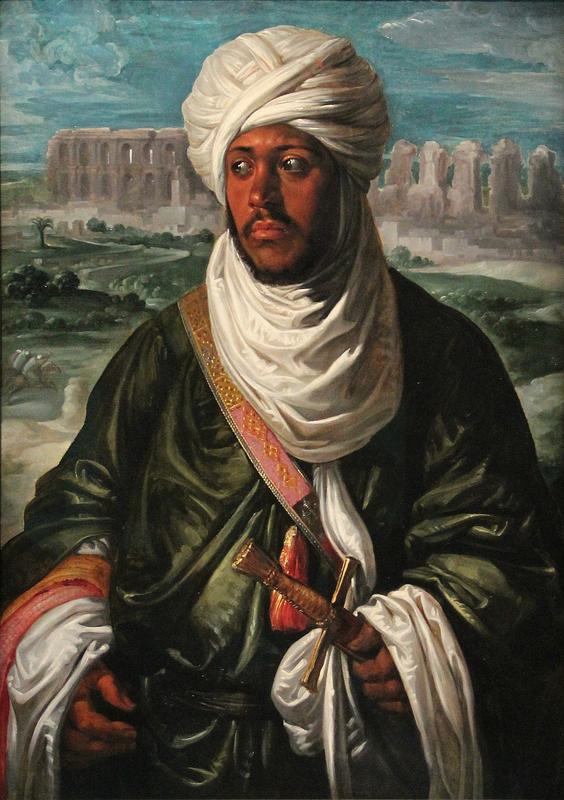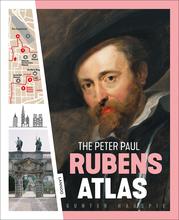More about Mulay Ahmad
- All
- Info
- Shop

Contributor
Of the many biblical scenes Rubens painted, it’s rare to see a real life person, let alone one of color, appear in his work.
The painting was based on an etching made decades prior in 1535 by Jan Vermeyen, a Flemish court artist. Charles V, in an effort to stymie Ottoman influence in North Africa, marched down to Tunis to conquer it in its entirety, assisted by sultan Mulay Hasan and his son, Mulay Ahmad, who Vermeyen depicted in his etching. This etching was a draft of an oil painting that was allegedly made of the heir apparent, but, if it existed, was lost to history.
In contrast to Vermeyen’s etching, which enlarged Ahmad’s head to emphasize his royal status, Rubens’s portrait is more realistically proportioned. The battle in the background between the Spanish forces and the Muslim opposition under Barbarossa was omitted in Rubens’s rendition. In this way, Rubens erased the reality of Ahmad’s bloody rise and reign in favor of a positive, sensationalized view of the prince. Rubens’s portrait of Ahmad may have also been the basis for Rubens’s portrayal of one of the three Magi a decade later.
One of the names that graces the title of the gallery in which the Rubens painting now resides is Leo Beranek. Beranek was an acoustic engineer with an illustrious track record. He was the director of two laboratories in World War II: the Electric-Acoustic Laboratory and the Systems Research Laboratory, the latter in which he developed technology meant to counter Japanese kamikaze attacks. He was awarded a Certificate of Merit by President Harry S. Truman for his efforts.
He was also the president of Bolt Beranek and Newman (BBN), a consulting firm that specializes in acoustics and sound systems that he himself founded in 1948. BBN was responsible for developing ARPANET, the ancestor to the Internet in 1968, with its first successful test run with two of its nineteen interlocked machines in 1969. The firm shortly thereafter invented the e-mail address in 1971 and the Internet in its earliest form on January 1, 1983. In later years, Beranek would have a hand in designing five concert halls and an opera house in Japan. This last one, the Tokyo Opera City Concert Hall, was completed in September 1997 and is nowadays considered one of the five best acoustically built concert halls on Earth. He died in Westwood, Massachusetts, on October 10, 2016 at the ripe age of 102.
Sources
- “Leo Beranek.” 2016. Leo Beranek Obituary - Des Moines, IA | the Des Moines Register. Des Moines Register. October 16, 2016. https://www.legacy.com/obituaries/desmoinesregister/obituary.aspx?n=leo….
- Spicer, Joaneath Ann, Natalie Zemon Davis, and K. J. P. Lowe. 2012. Revealing the African Presence in Renaissance Europe:Issuu. 3rd ed. Baltimore, MD: Walters Art Museum. https://issuu.com/the-walters-art-museum/docs/singlepages3429_african_p…
- “The Youngest King.” 2015. National Gallery of Art. National Gallery of Art. 2015. https://www.nga.gov/features/rubens-magi/the-youngest-king.html














